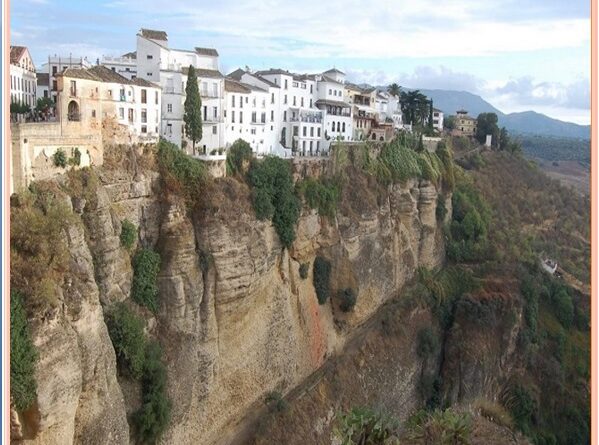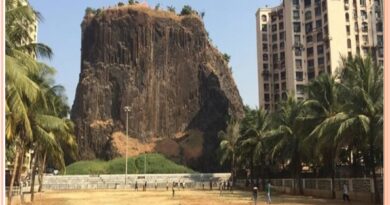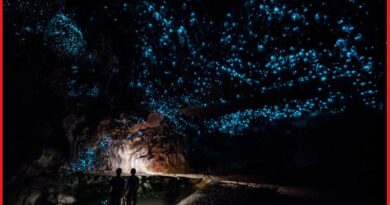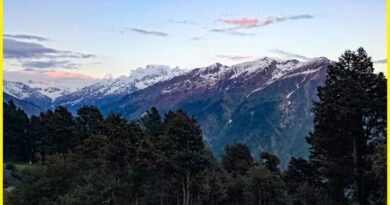A Lost city in Steep Gorge of Limestone cliff- Ronda, Andalucia Spain
Ronda Andalucia
Ronda is a dramatic town in Spain, built astride a huge gash in the mountains carved out by the Rio Guadalevin river. Its spectacular location atop El Tajo gorge and its status as the largest of Andalucia’s white towns have made it hugely popular among tourists. South of the gorge, Ronda’s old town is largely filled with palaces and eye-catching scenery. Further north, the grid-shaped ‘new’ town is perched atop steep cliffs, with parks and promenades looking over the surrounding mountains.
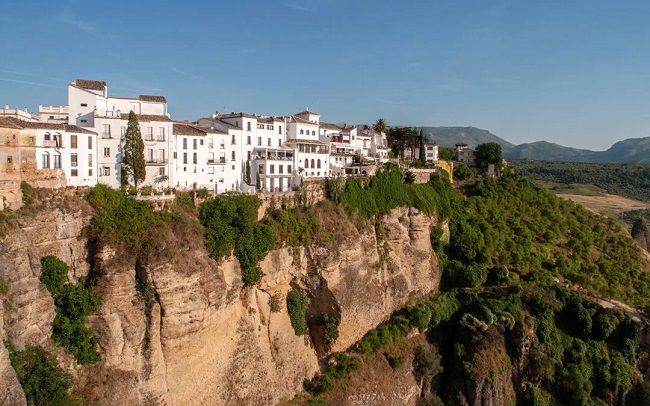
The park is made of porous limestone, and an underground world of interconnected tunnels and pools lies beneath it. The site is a major center for paragliding, rock climbing, and riding. The caves of this area have historical interest. Cueva de la Pileta reveals stalagmites, stalactites, and paintings of fish, goats, and stickmen. It is believed that Paleolithic tribes roamed the Serrania de Ronda, leaving behind 25,000-year-old red-and-black paintings in the area.
Ronda the “city of dreams” perched on a seemingly precarious platform of limestone rock above a steep Gorge. Ronda is one of Spain’s oldest towns and was first settled by the Celts and later inhabited by the Romans and Moors. People can feel its history all around its cobbled streets, old mansions, and stone churches.
The population of Ronda is around 34,000 and it is offering all the essential services of a large town but is still small enough to retain its authentic charm as one of the white villages (Pueblos Blancos) of Andalusia. At a height of 723m in the Ronda mountains, the city has a cooler year-round temperature than the sea coast, making life in Ronda altogether easier than in other Spain cities.
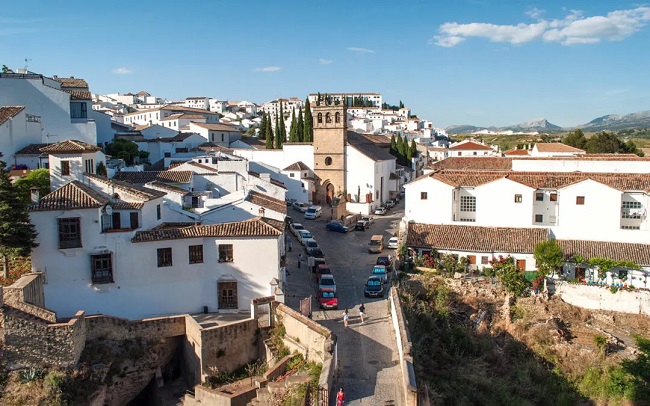
Within a few kilometers of Ronda are some of the most visited white villages. the famous white villages of Andalucia, Setenil de las Bodegas, Grazalema, Gaucín, Juzcar, Benalauria, Montejaque, Teba, Cortes de la Frontera and Igualeja. This white town has one of the most beautiful settings around, perched precariously on the edge of a gorge surrounded by rolling hills, whitewashed buildings, orange trees, and olive groves.
Geology and the Depression of Ronda
The scenic area Serrania de Ronda is part of the set of mountain ranges known as the Baetic Cordillera which starts in Morocco and extends into a large portion of southern Spain. the mountain range is formed when the African continent collided with Europe.
These colliding continents left limestone mountains to squeeze Ronda, typically providing views of both mountain and sea. Chocolate milk-colored water of the Guadalevin River slowly carved this Spanish gorge through Jurassic limestone. Guadalevin’s name means “river of milk” in Arabic. Before flowing into the Mediterranean, the river picked up several streams on the upside.
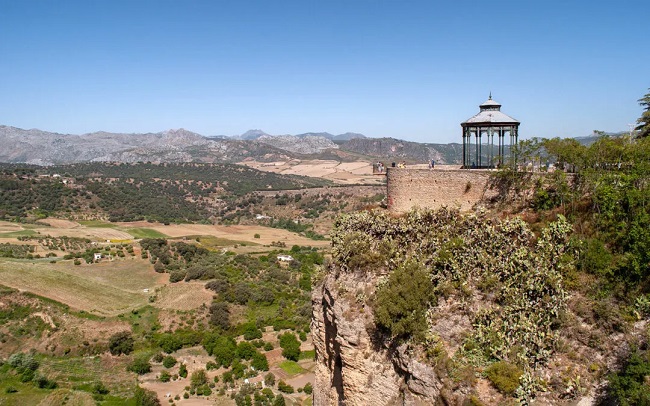
Famous Puente Nuevo (new bridge)
The heart of Ronda Spain is the El Tajo gorge. It is nearly 100 meters deep into the Guadalevin River. The gorge cuts right through the center of Ronda and splits the town in two. On one side is the Moorish old town and on the other is the 15th-century El Mercadillo new town, and three bridges cross the gorge to connect them.
Also, Read- The Scenic Woodland and Ratangarh-Kalsubai trek in Sahyadris Range
The Puente Nuevo or New Bridge is Ronda’s most famous landmark and a giant triple arch with columns stretching 120 meters down into the deep of the gorge. The new bridge is over 230 years old and opened in 1783 after taking 40 years to build.
Puerto Nuevo (New bridge) is one the most popular place in Ronda. It is also worth visiting the other two-The Puente Viejo (Old Bridge) and the smaller Bridge of San Miguel (Arab Bridge). Take a walk over each of them for a different view of the gorge and the town’s historic buildings.
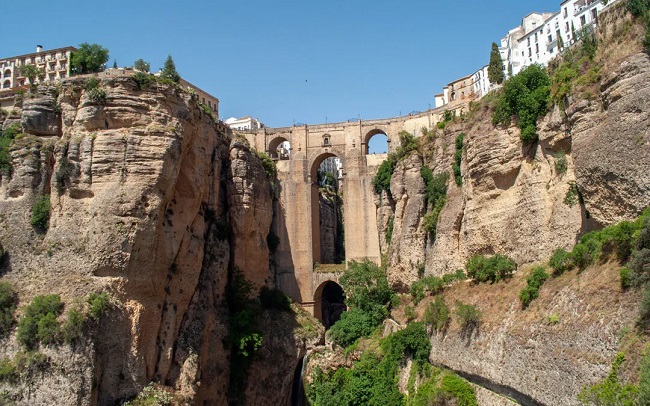
Spain’s oldest bullrings
Modern bullfighting was practically invented here in the late 18th century. Ronda’s Plaza del Toros is one of Spain’s oldest and most impressive bullrings. It was built in 1785 and could hold 5000 spectators, and is unusual in that all the seats are covered by two-story arched galleries. It is an impressive place to visit, and a big part of the town’s history and culture. Here is a museum where you can learn more about Ronda’s bullfighting tradition.
With panoramic views of the surrounding countryside, watching the sunrise or setting at the cliffside Alameda del Tajo gardens is one of the essential things to do in Ronda.
How to get to Ronda
Ronda is located in Andalusia in southern Spain, west of Malaga on the Mediterranean coast. Malaga is where you’ll find Ronda’s nearest airport, but it’s also fairly close to Seville, Jerez, and Gibraltar airports. If you’re traveling by road, it’s around 105km from Malaga, 130km from Seville, and 178 km from Granada.
